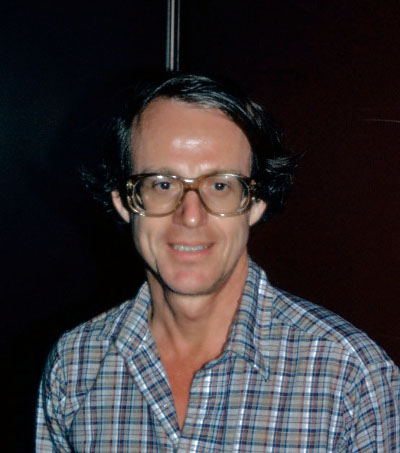 Alan T. Moffet, 1981 (NRAO/AUI/NSF image, from Sullivan collection)
Alan T. Moffet, 1981 (NRAO/AUI/NSF image, from Sullivan collection)
Alan T. Moffet
Contributed by Kenneth I. Kellermann
Alan Theodore Moffet was born in 1936 and died on August 20, 1987. Al received his BA from Wesleyan in 1957 and his PhD in Physics from Caltech in 1961. After leaving Caltech, Al spent a year at the University of Bonn as a Fulbright Scholar where he refined his skills in German. He then returned to Caltech first as a Research Fellow, and then went on to became a Professor of Radio Astronomy. From 1975 to 1979, he led the Caltech radio astronomy program as the Director of the Owens Valley Radio Observatory (OVRO), and from 1984 to 1987 was the Caltech Executive Officer for Astronomy.
Al went to Caltech graduate school to study nuclear physics, but in 1959 became involved in the radio astronomy program and was one of the first people in the US to receive a PhD in radio astronomy. While still a graduate student, working under John Bolton, Al, along with the other graduate students, helped to build OVRO. His thesis, using the new OVRO interferometer, showed for the first time the ubiquity of double component radio sources. Later, he was probably the first person to recognize that VLBI observations of the quasar 3C 279 implied faster-than light motion. In addition to his continued role in the growing Caltech VLBI program, during his relatively short, but immensely productive career, Al studied radio galaxies, the anisotropy of the microwave background, radio source polarization, molecular spectroscopy, pulsars, and the S-Z effect. For years, his 1966 Annual Reviews (vol. 4, p. 145) article, "The Structure of Radio Galaxies," and his 1975 review paper, "Strong Nonthermal Radio Emission from Galaxies," were the standard references on radio galaxies.
During the late 1960s, Al led the unsuccessful Caltech effort to design and fund the Owens Valley Array, and later, he became a valuable member of the VLA Advisory Committee where he made major contributions to the VLA design. Starting in the 1970s, he led the very productive program to develop the Owens Valley 3-element millimeter array that was later expanded to include six elements. Al was equally at home with radio astronomy technology and astrophysics. He is remembered for his forceful character, deep insight, and his legendary knowledge of the radio astronomy literature.
![[IAU logo]](iau_wb_thumb.jpg)
![[URSI logo]](URSI-logo-thumb.jpg)
![[Karl Jansky at his antenna]](jansky_photo_02_thumb.jpg)
![[Reber's Wheaton antenna]](Reber_Telescope_Wheaton_thumb.jpg)
![[Dover Heights]](Dover_Heights_02_thumb.jpg)
![[4C telescope]](GB61-195_4C_telescope_thumb.jpg)
![[Ewen and horn antenna]](ewen_horn1s.jpg)
![[Dwingeloo, 1956]](Dwingeloo-1956-thumb.jpg)
![[Jocelyn Bell Burnell and Cambridge antenna used in pulsar discovery]](burnell2_thumb.jpg)
![[Lovell Telescope at Jodrell Bank]](site_1594_0001-500-334-20180316163019-thumb150.jpg)
![[Wilson, Penzias, and Bell Labs horn antenna]](wilson-penzias-horn_thumb.jpg)
![[6-m Millimeter Radio Telescope in Mitaka, Japan]](6m-thumb.jpg)

